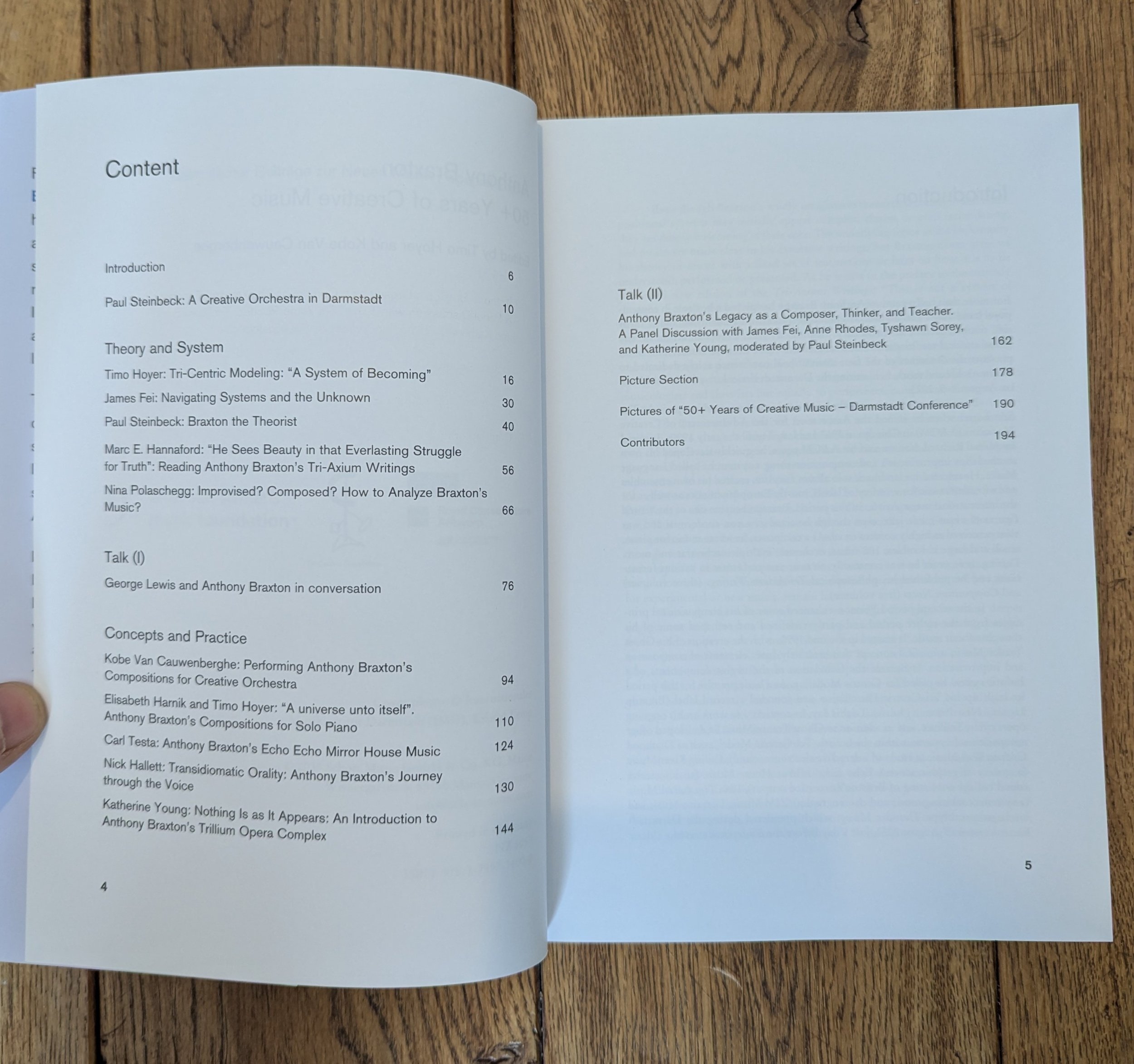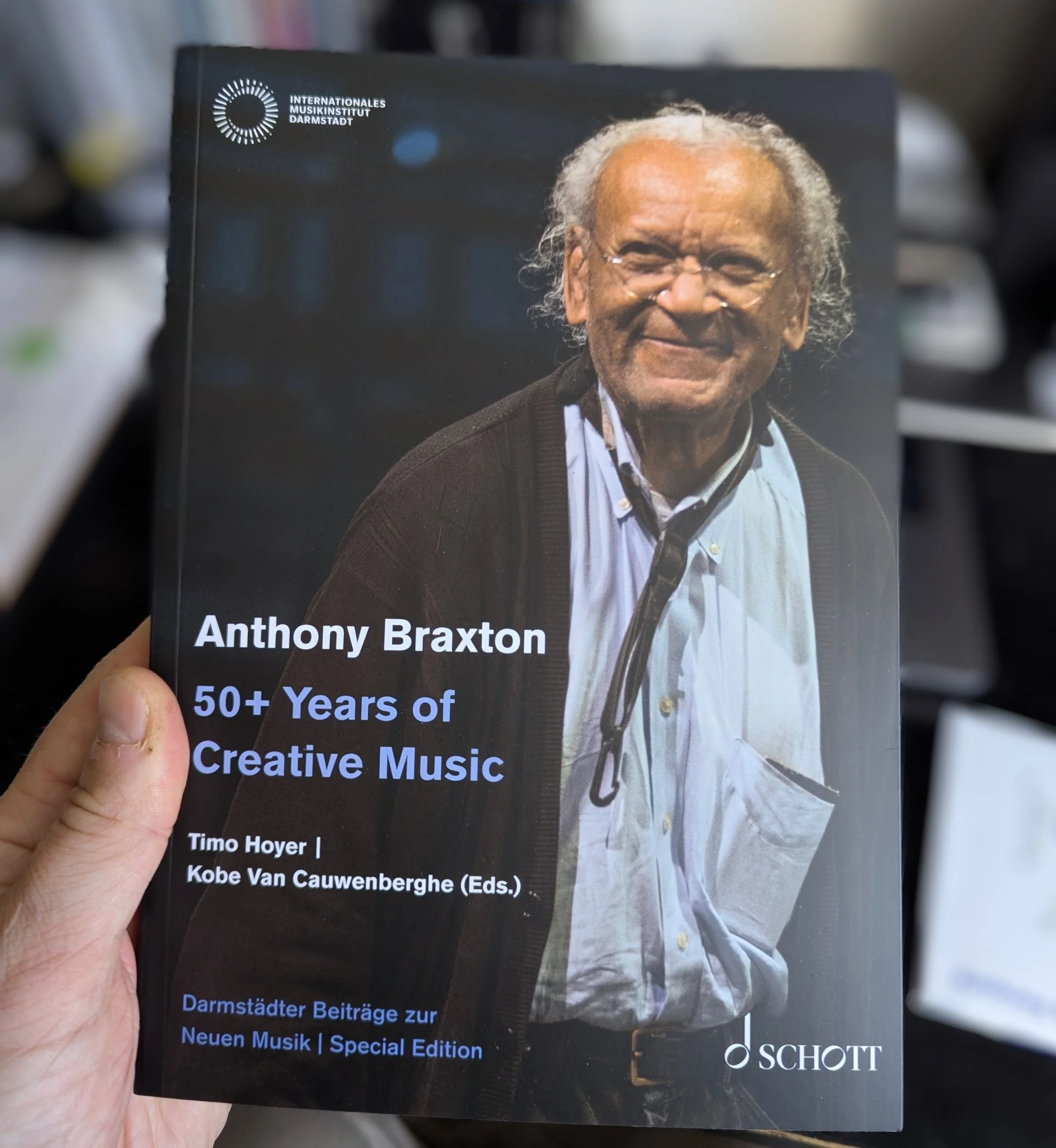I’m very excited to share the news of my first book publication! “Anthony Braxton - 50+ Years of Creative Music” was co-edited with Timo Hoyer and presents the outcomes of the 2-day conference on the music, theory and legacy of Anthony Braxton that took place in Darmstadt in 2023. It contains an incredible collection of contributions by scholars, musicians and close collaborators of Braxton: Timo Hoyer, Paul Steinbeck, Marc Hannaford , James Fei , Nina Polaschegg, Elisabeth Harnik , Carl Testa , Nick Hallett , Kyoko Kitamura , Katherine Young , George Lewis, Anne Rhodes, Tyshawn Sorey and yours truly.
The book is published by Schott Music as a special edition of the series “Darmstädter Beiträge zur Neuen Musik”.
The book is accompanied by a CD release, "Anthony Braxton: 2 comp (2023)" (sold separately) featuring the world premiere of Thunder Music and the performance of the Darmstadt Creative Orchestra (conducted by Braxton, Katie Young and myself). The CD comes with extensive liner notes by Braxton himself, as well as additional texts by Timo Hoyer and myself.





